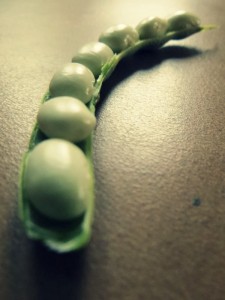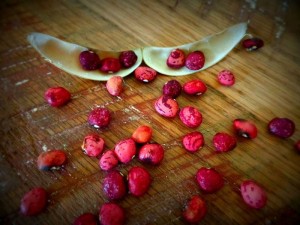There was a time when shelling beans were a staple food. Beans plus corn make a complete protein that was critical to meet the nutritional needs of Native Americans. Beans also had a prominent place in early homestead gardens. Pioneers ate them fresh out of the shell in-season, and reconstituted dried beans to make hearty winter meals.
Shell beans are often overlooked in the modern garden. I think it’s a shame. Today beans can provide homegrown protein for individuals who want to grow their own food.
Pole vs. bush

Seed catalogs indicate whether beans are pole or bush. Pole beans, runners and half-runners, are climbers that require plant support. Pole beans grow better in places with cooler summers. The Native American Three Sisters garden design uses corn stalks to support pole bean plants. Squash is inter-planted last.
Bush beans grow on compact plants. Plants support each other as they grow. Bush beans grow well in hot climates.
Snap beans can be pole or bush. The term ‘snap’ is used to describe a bean eaten at its tender, immature stage. Wax yellow beans are snap beans.
String beans can also be pole or bush. They are distinguished by a string down the center of the bean that can serve as a zip cord when shelling. String beans can be eaten in-shell at a tender immature stage, or left to mature fully, then shelled and dried.
Other types of beans
- Lima beans are shell beans that require warmer soil temperatures to germinate. Gardeners call baby limas ‘butter beans’ in the south.
- Broad beans are also called fava beans. They are a type of large shell bean that is popular in Mediterranean cuisine.
- Edible soybeans, edamame, must be eaten at the green shell stage before they turn tough and starchy.
Growing and harvesting shell beans

Unlike green beans which are eaten in the shell, shelling beans are removed from the shell after it has dried on the vine. In USDA plant hardiness zone 6 we can plant shell beans in early May and harvest in mid-August.
It is critical beans are completely dry before storing. One moist bean can ruin the bunch in storage. I remove shells and run beans in the dehydrator at 90 degrees F for 6-8 hours. Dried beans keep well for several years sealed in airtight containers.
STAY INFORMED. SIGN UP!
Up-to-date agriculture news in your inbox!












